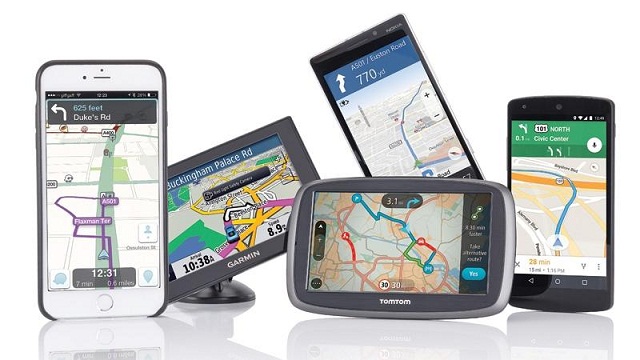5 driving techniques for short bikers
5 April, 2019 0
Technique one: get on the bike
To get on a high motorcycle, turn the handlebar before going up or down. Put the motorcycle first, so it does not move. Starting on the left side of the bike, turn the handlebar as far to the right as possible. The bike tilts down and towards the one, which results in a big difference for those of us who are short.
Large bikes can be raised with the side leg down. Once up, to raise the side leg, move your body to the right side of the seat and place your right foot on the ground. Tilt the bike slightly to the right and raise the side leg (keep it well lubricated). Take the bike to a vertical position combining the strength in your arms, pushing with the right foot and stepping on the pedal of the left foot.
Another technique is the “start-up” assembly method. Lift the side leg, start the engine, press the clutch, put the bike in gear, release the clutch and run alongside the bike one or two steps before putting your left foot on the footrest, turning the body upwards and towards behind. Use the reverse process to disassemble. This method requires coordination, balance and good control of the accelerator and clutch.

Technique two: one foot down, dead motorcycle balance
I teach all adventurous and dirt bike bikers to put only one foot down. Moving quickly and SOFT from side to side, with one foot on the ground is an essential skill. All slow maneuvers should be smooth, controlled and balanced. To learn how to keep your balance, start with a safe engine with the engine off and a friend on the back of the bike to catch you if you lose your balance.
Start with your left foot on the ground. The cheek of his right rear is completely on the left side of the seat. Your right foot is in the right footrest. Now push up and over your legs so that your right foot is on the ground and your left foot on the footrest. The cheek of your rear left end should be on the right side of the seat. Practice this “jump” from side to side to get used to being dynamic on the bike and to train the muscular memory to move from side to side. Try not to use your arms. It’s about your legs. This maneuver sounds easy, but for low bikers, bending the leg and ankle to get enough spring to get up and especially requires work.
Once you jump consistently and smoothly from side to side while maintaining balance, practice sitting balance. Pull the foot towards the footrest and center your body on the seat while balancing the bike. When you lose your balance, change quickly to lower a foot. Practice both sides, going from the foot to the floor to the sitting balance, at the foot of the floor.
Finally, practice moving from one foot on the floor to a balance position before changing the body and foot to the side. When you get tired and / or master these steps, exchange and assist your partner.

Technique Three: Slow speed balance. “Rock It. Track it. Walk it.”
The slow speed balance is especially crucial for the lower bikers. “Slow” means clutch control. “Rock it, track it, walk.” It’s about mastering clutch control, practice with a friend in a flat, smooth area.
Straddle your motorcycle with one foot down, pull the clutch (try using two fingers on the clutch). Put the bike in first. Do not use the accelerator (most ADV bikes have sufficient torque to move between 8 and 16 km / h without accelerating). This is 100% on clutch control. Release the clutch slowly to the point of friction. As soon as you feel compromised, press the clutch again. This will make the bike move smoothly without moving forward. Repeat this clutch coupling of entry and exit, unhook and feel that the bike is swinging under you. Everything must be smooth and controlled.
Now, “drag” the bike releasing the clutch enough for the bike to advance 13 or 15 centimeters before pulling the clutch again. Gently repeat this crawl and stop sequence until you can move and pause the bike exactly when and where you want. Do not use the accelerator. Do not use the brakes. This is all about clutch control.
Finally, click on “Walk” by releasing the clutch enough to allow the motorcycle to move 13 or 15 centimeters before pulling the clutch again and sliding to a stop. Repeat the process of walking the bike using only the clutch. Throughout the “Rock It.” Track it. “Walk.” The pilot’s hands always cover the clutch, soften and tune it in and out, but never release it completely. The movement of the motorcycle is completely controlled with only the clutch. Mastering this skill is essential for walking slowly. “Soft” is the key. Any jarring or imbalance will make slow maneuvers almost impossible.

Technique Four: The Moto Squat
Once you understand how to slide and gently squeeze the clutch to control the motorcycle, you will be ready to practice slow driving in both sitting and standing positions. During the slow exercises, I train the bikers to brake with the rear brake instead of the front brake for several reasons. First, pressing the front brake causes the bike to “sink”, which hinders balance, while pressing the rear brake causes the bike to stabilize. I also find that newer bikers can be confused with the combination of accelerator and front brake. As we are focusing on balance, I simplify the exercise to achieve an optimal balance.
I like to challenge high performance bikers with a “Bike Squat” style test exercise that is especially useful for shorter riders. This is an excellent way to follow the bike and / or move extremely slowly in a straight line and in turns. Drive the motorcycle slowly at first from a standing position on the motorcycle. While keeping the throttle slightly lit and steady, press the clutch while you gently drag the rear brake. Press the clutch in and out as necessary. The tension between the front power of the engine and the rear brake will cause the bike to bend and grip the ground. This center of gravity and lower grip are useful to keep you standing. Remember that the accelerator is constant, while the clutch and the rear brake are finely adjusted. Once the pilots acquire competition, they can add compression of the suspension and pop the clutch as they are released from the standing track to an unweighted or tilted wheel. This advanced technique is very useful in complicated technical sections where pilots with longer legs could simply make their way.

Technique five: “The Jacques Turn”
I’ve had my share of tips running low-speed turns. Like most, he was used to “spin around the inside foot.” The dilemma is when I put my inner foot with short legs down, all my weight moves inward, which makes it impossible to counterbalance. Also, when I put that inner foot down, my body is looking forward instead of turning. To get the feet, knees, hips, shoulders and head oriented in the direction of the turn, I devised a highly effective method for low-speed turns that virtually eliminates low-speed falls. My team of coaches has dubbed this “The Jacques Turn”.
We train pilots to re-train muscle memory by speaking out loud the four steps of “The Jacques Turn”. With practice, this new method will become second nature.
- Step 1. Inside foot up on the footrest.
- Step 2. Change the inside of the cheek from the back to the outside of the seat.
- Step 3. Move the outer foot forward of the outer foot and point the toe in the direction of the turn.
- Step 4. Turn the handlebar in the direction of the turn.
Your feet, knees, hips, shoulders and head now look towards the curve, while the motorcycle is upright, and the handlebar is turned towards the curve. The next phase requires a master clutch control, since the bikers use the clutch as taught in “Rock It. Track it. Walk. “You can simply” walk on the motorcycle “in a tight direction lock turn, this simulates making a U-turn or maneuvering in a parking lot, increasing the speed of the turn slightly allows you to balance the bike while placing the outer foot In the outer footrest, since the body weight is on the outside, you are now in a natural position to counteract the motorcycle.This makes for a smooth transition to the standing position that weighs the outer pedal.
Bikers of all sizes are capable of any challenge along the way. Choose the best bike for your physical stature, modify the motorcycle to suit your body and practice the previous techniques for unlimited fun.







